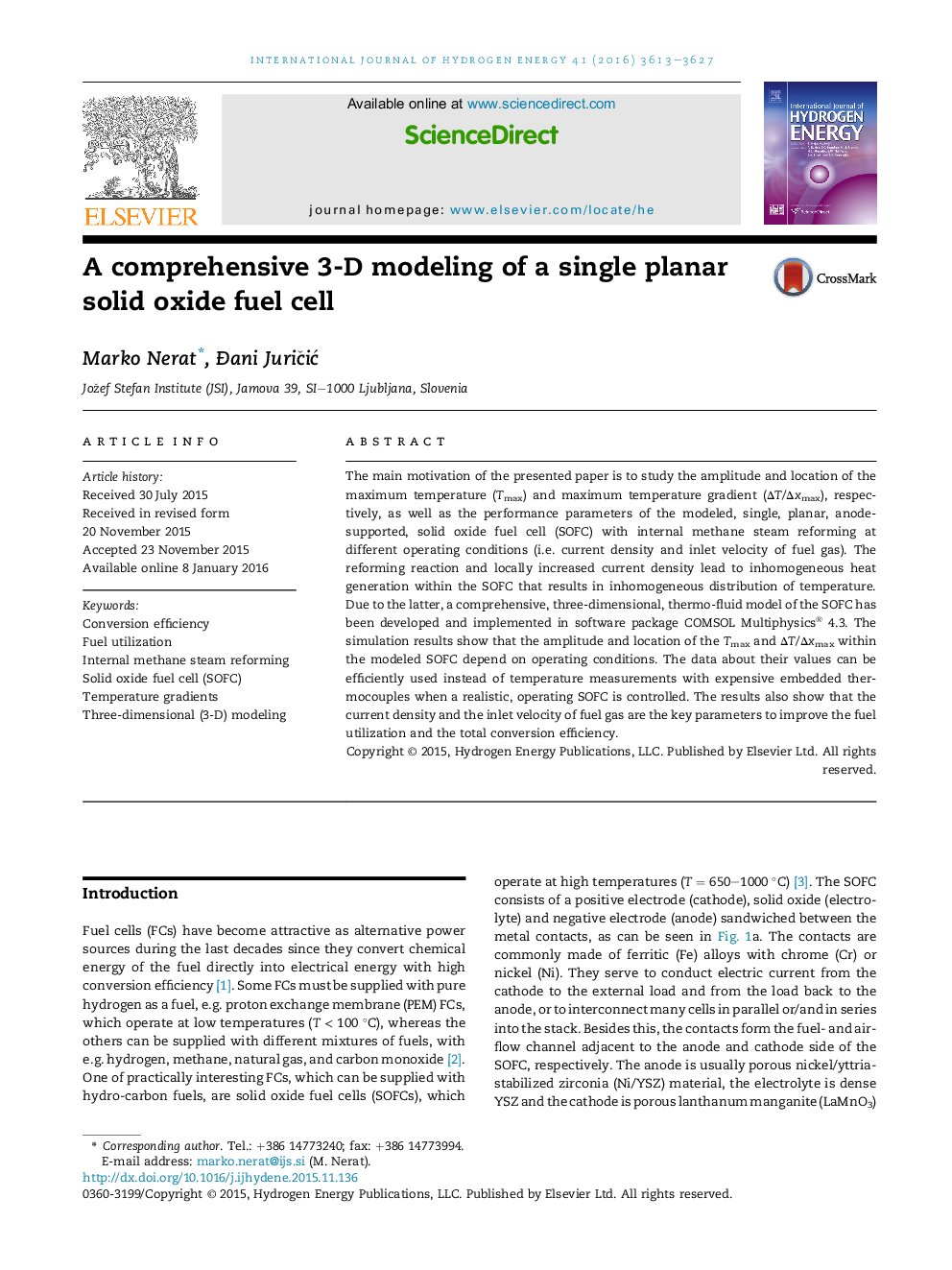| Article ID | Journal | Published Year | Pages | File Type |
|---|---|---|---|---|
| 1270264 | International Journal of Hydrogen Energy | 2016 | 15 Pages |
•The solid oxide fuel cell with internal steam reforming reaction is modeled in 3D.•The methane steam reforming includes forward and backward reactions.•Thermal radiation model is necessary when considering high-temperature operation.•Current density and velocity of fuel gas are key parameters to improve performance.•Maximum temperature and its gradients are predicted within the modeled structure.
The main motivation of the presented paper is to study the amplitude and location of the maximum temperature (Tmax) and maximum temperature gradient (ΔT/Δxmax), respectively, as well as the performance parameters of the modeled, single, planar, anode-supported, solid oxide fuel cell (SOFC) with internal methane steam reforming at different operating conditions (i.e. current density and inlet velocity of fuel gas). The reforming reaction and locally increased current density lead to inhomogeneous heat generation within the SOFC that results in inhomogeneous distribution of temperature. Due to the latter, a comprehensive, three-dimensional, thermo-fluid model of the SOFC has been developed and implemented in software package COMSOL Multiphysics® 4.3. The simulation results show that the amplitude and location of the Tmax and ΔT/Δxmax within the modeled SOFC depend on operating conditions. The data about their values can be efficiently used instead of temperature measurements with expensive embedded thermocouples when a realistic, operating SOFC is controlled. The results also show that the current density and the inlet velocity of fuel gas are the key parameters to improve the fuel utilization and the total conversion efficiency.
